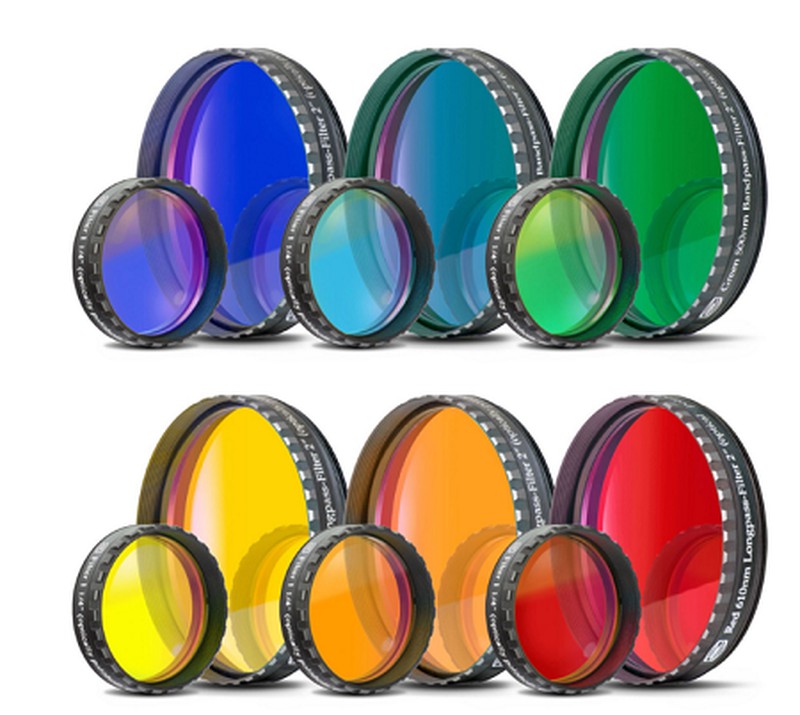Telescope filters
Astronomical filters are one of the most useful accessories to complete our telescope

Astronomical observation is conditioned by a multitude of parameters, both the optical parameters of telescopes and eyepieces as well as the parameters of the environment, environmental, atmospheric, and finally, outer space.
So we need a tool to eliminate these limitations and get the clearest and most effective vision possible. A first step in this is the optical treatment of the telescope's lenses and a second step is the use of astronomical filters.
There are many astronomical filters, although we can differentiate them into the following categories:
- Solar and astrosolar
- Moles
- Planetary
- Light pollution and deep sky
Perhaps it is the most important filter in astronomy, because thanks to them we avoid suffering damage to our sight and allow us to observe the sun without any risk. The observation of the sun without filters is terminally prohibited, because it irreparably damages our eye.
We will use these filters to cover the target, usually with a silver foil, which can be mounted on a bracket or directly attached to the target. Then we also have the opportunity to use a secondary sunscreen for the eyepiece or the CCD camera to improve the clarity of the observation and its details.
The lunar filters will help us to observe the moon without excessive brightness or reflections. It is a very common filter for astronomical observation, especially in the full moon phase. Their function resembles that of photographic polarizing filters, and in fact polarizing filters are also used for lunar observation.
They can be used both in eyepieces and in CCD cameras and also in most telescopes, including those for initiation. Let us remember that the moon is practically the first star that we observe with a telescope.
To improve the observation of planets, we use colored planetary filters, with them we can better visualize the details of the surface, satellite rings, spots, etc.
- Green: Improves visibility of CO2 Hoarfrost and ground fog on Mars. Increase the contrast between the red and blue regions on Jupiter and Saturn. Provides the best contrast for Tyco, Copernicus and Kepler lunar craters.
- Yellow: Enhances the contrast between Jupiter's straps. Increases the contrast of the lunar and martian surface
- Orange: Contrast enhancement for lunar and planetary observations at sunset. Improved detection of dark areas on Mars and penetrates the nebulous atmosphere of Mars. Shows more detail in the cloud bands of Jupiter and Saturn. Suitable for daytime observations of the Moon , Mercury and Venus.
- Red: Blue and green lights are almost completely filtered blocking the increasing contrast between the light and dark bands on Jupiter and Saturn. Most interesting filter to use to observe the polar layers of Mars. An optimal filter for daily observation of all planets. .
- Blue: Planetary in general
- Dark Blue: Planetary in general
Light pollution is the greatest handicap for astronomical observation in urban centers. The excessive luminosity emitted by cities is an impediment to a clear observation of space, especially the deep sky.
In addition we must add the effect of the atmospheric particles themselves, from condensed water vapor to dust, which reflect and absorb the light emitted by urban sources. They facilitate the formation of mist and therefore this makes observation even more difficult.
These types of filters counteract these limitations and allow the clearest possible observation and photography.





Opinions of our clients
Receive our news